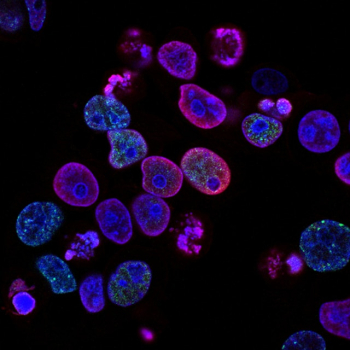
NMN vs NR: What's the Real Difference? An Evidence-Led Comparison
NMN vs NR: What's the Real Difference? An Evidence-Led Comparison
NMN vs NR: What's the Real Difference? An Evidence-Led Comparison
Table of contents
Nicotinamide Adenine Dinucleotide (NAD+) is one of the most important substances for promoting healthy ageing.
NAD+ is required for over 500 enzymatic reactions in your body, and plays a huge role in fuelling cellular energy and DNA repair. As we age, NAD+ levels fall, causing many of the negative effects of ageing. Understandably, then, anyone interested in increasing their healthy lifespan should start by finding the best way to increase NAD+ levels!
Over the course of this article we will explore the difference between NMN and NR - two popular NAD+ boosters. We’ll dig into how they differ, what existing scientific research says about each, and the situations in which you might prefer one over the other.
In the ever-evolving landscape of health and longevity, the quest for effective strategies to promote cellular vitality and combat ageing has led to a deeper exploration of compounds like Nicotinamide Mononucleotide (NMN) and Nicotinamide Riboside (NR).
These molecules hold promise as precursors to Nicotinamide Adenine Dinucleotide (NAD+), a coenzyme crucial for numerous cellular processes. Let's delve into the intricacies of NMN and NR, comparing their mechanisms, benefits, and potential applications.
What is Nicotinamide Mononucleotide (NMN)
Nicotinamide Mononucleotide (NMN) emerges as a direct precursor to NAD+, naturally occurring in various foods. Upon ingestion, NMN undergoes conversion to NAD+ through the nicotinamide phosphoribosyltransferase (NAMPT) enzyme pathway, replenishing cellular NAD+ levels and supporting metabolic processes.
What is Nicotinamide Riboside (NR)
Similarly, Nicotinamide Riboside (NR) serves as another NAD+ precursor, abundantly found in milk. Unlike NMN, NR follows a distinct metabolic pathway, relying on nicotinamide riboside kinases for conversion to NAD+. This alternative route highlights the diverse mechanisms by which cells can replenish NAD+ reserves.
What is NAD+ and its Role in Cellular Function?
NAD is a coenzyme found in all living cells.
The easiest way to understand NAD+ is to imagine it as a cellular battery. It helps enzymes function, allows energy transfer, and supports processes including metabolism, immunity, and DNA repair.
Nicotinamide Adenine Dinucleotide (NAD+) stands as a cornerstone in cellular metabolism, orchestrating a myriad of biochemical reactions essential for sustaining life. Acting as a coenzyme, NAD+ participates in redox reactions vital for energy production, facilitates DNA repair mechanisms, modulates gene expression, and fuels cellular signalling pathways. Its multifaceted role underscores its significance in maintaining cellular health and functionality.
When comparing NMN and NR, considerations extend beyond their roles as NAD+ precursors. Factors such as bioavailability, stability, and efficiency in raising NAD+ levels across different tissues and cell types come into play, shaping their potential therapeutic applications.
Why Does NAD+Decline With Age, And How Do NMN And NR Help?
Our bodies naturally produce NAD, but become less efficient at doing so as we age, leading to a breakdown in crucial cellular functions.
As NAD production slows down, our cells become less capable of dealing with stress, repairing damage, and reproducing. This in turn leads to an increased demand for NAD, causing a vicious cycle where cells become less and less efficient.
We can’t increase NAD levels by taking NAD directly because it’s too big to pass through cell walls and gets broken down in the gut, this is where precursors like NMN or NR come in!
NMN (Nitotinamide Mononucleotide) and NR (Nicotinamide Riboside) are two popular ‘NAD+-boosters’.
Both substances are precursors to NAD+. While NMN is the direct precursor, NR is first converted by the body into NMN before being converted into NAD+.
So people take either NR or NMN for the same purpose - boosting NAD+. But what’s the difference in results and how can someone choose the most appropriate NAD+ booster?
Benefits of NMN and NR
The potential benefits of Nicotinamide Mononucleotide (NMN) and Nicotinamide Riboside (NR) extend beyond cellular metabolism to encompass various aspects of metabolic health, cardiovascular function, and cognitive performance.
Insulin Sensitivity
Preclinical studies suggest that NMN and NR supplementation may improve insulin sensitivity and glucose tolerance, potentially reducing the risk of insulin resistance and type 2 diabetes. Enhanced insulin sensitivity contributes to better blood sugar control and metabolic homeostasis.
Cardiovascular Health
NMN and NR have been implicated in promoting cardiovascular health by exerting vasoprotective effects, improving endothelial function, and reducing oxidative stress and inflammation within the cardiovascular system. These benefits may help mitigate the risk of cardiovascular diseases such as atherosclerosis, hypertension, and heart failure.
Cognitive Function
Emerging evidence suggests that NMN and NR supplementation may support cognitive function and brain health by enhancing neuronal energy metabolism, promoting synaptic plasticity, and mitigating age-related cognitive decline. These compounds hold promise for preserving cognitive function and reducing the risk of neurodegenerative diseases such as Alzheimer's disease and dementia.
While the potential benefits of NMN and NR on insulin sensitivity, cardiovascular health, and cognitive function are promising, further research is needed to validate these findings in human clinical trials and elucidate the underlying mechanisms of action.
Bioavailability and Ease of Absorption
One key difference between NMN and NR is how they are absorbed by the body and converted to NAD.
|
NMN |
NR |
|
NMN’s journey to becoming NAD+ is slightly simpler than that of NR. |
NR is transported to the cells through specific genes. |
|
NMN can be absorbed directly through the cell membrane via facilitated diffusion. |
Once absorbed, NR is converted first to NMN, then NAD+ via the salvage pathway. |
|
Once it is absorbed, it is converted into NAD+ via something called the salvage pathway. |
This additional step can impact the efficiency and bioavailability of NR compared to NMN. |
Beyond this, research suggests that NR being converted to NAD+ largely takes place in the liver and blood, whereas NMN is converted more efficiently to NAD+ in other tissues. This tracks with data showing NR is particularly effective at improving liver health.
Clinical Studies on NMN and NR
NMN and NR have been the subject of widespread clinical research. As NR has been in use for longer, there has been more research published on the effect it has on humans. However, pre-clinical and initial human research on NMN is extremely promising.
NR
|
Study Type |
Year |
Findings |
|
Human |
2022 |
NR increased cerebral NAD levels in patients newly diagnosed with Pakrinson’s Disease (l) |
|
Human |
2018 |
NR improved insulin sensitivity and reduced liver fat content in obese, insulin resistant men. (l) |
|
Animal |
2023 |
NR replenished cochlear NAD+ levels and improved hearing in elderly mice. (l) |
NMN
|
Study Type |
Year |
Findings |
|
Human |
2021 |
NMN improved insulin sensitivity, reduced liver fat content, increased muscle mitochondrial capacity and reduced DNA damage in adults with glucose intolerance. (l) |
|
Animal |
2024 |
NMN reduced heart plaque, increased collagen content, boosted anti-oxidant activity, and reduced inflammation in mice. |
While there are more studies involving NR, the results from initial NMN studies appear to show a wider range of benefits.
More clinical research in humans is needed to definitively show the impact of NMN supplementation in humans. That’s why DoNotAge.org is currently running a number of trials involving NMN and humans.
The Salvage Pathway for NAD+ Biosynthesis
The salvage pathway for Nicotinamide Adenine Dinucleotide (NAD+) biosynthesis plays a pivotal role in maintaining cellular NAD+ pools and supporting various physiological processes essential for cellular health and function. Unlike the de novo synthesis pathway, which involves the conversion of tryptophan to NAD+, the salvage pathway utilizes precursor molecules such as Nicotinamide (NAM), Nicotinamide Riboside (NR), and Nicotinamide Mononucleotide (NMN) to regenerate NAD+ from its degraded forms.
Key points regarding the salvage pathway and its implications for cellular health include:
NAD+ Recycling: The salvage pathway allows for efficient recycling of NAD+ molecules, ensuring continuous availability of this critical coenzyme for cellular metabolism, DNA repair, and other essential processes.
Role in DNA Repair: Adequate NAD+ levels are essential for DNA repair mechanisms, as several enzymes involved in DNA damage repair require NAD+ as a cofactor. Disruption of NAD+ biosynthesis via the salvage pathway can compromise DNA integrity and contribute to cellular dysfunction.
Mitochondrial Function: NAD+ plays a central role in mitochondrial biogenesis and function, regulating energy production, oxidative metabolism, and mitochondrial dynamics. Preservation of NAD+ levels through the salvage pathway is crucial for maintaining optimal mitochondrial health and cellular energetics.
Implications for ageing and Disease: Dysregulation of the salvage pathway and decline in NAD+ levels have been implicated in various age-related diseases, including metabolic disorders, neurodegenerative diseases, and cardiovascular conditions. Strategies aimed at enhancing NAD+ biosynthesis via the salvage pathway hold therapeutic potential for mitigating age-related decline and promoting cellular health.
Understanding the intricacies of the salvage pathway for NAD+ biosynthesis provides valuable insights into potential strategies for preserving cellular health and combating age-related diseases. Further research into modulating this pathway may unlock novel therapeutic interventions for promoting longevity and wellness.
Differences in the Metabolism of NMN and NR
Nicotinamide Mononucleotide (NMN) and Nicotinamide Riboside (NR), despite being precursors to Nicotinamide Adenine Dinucleotide (NAD+), undergo distinct metabolic pathways within the body. Understanding the differences in the metabolism of NMN and NR provides insights into their bioavailability, conversion rates, and potential effects on cellular NAD+ levels.
|
NMN |
NR |
|
a. NMN is converted into NAD+ through the salvage pathway, primarily in the cytoplasm of cells. |
a. NR follows a similar pathway to NMN but differs in the initial conversion step. |
|
b. Upon ingestion, NMN is absorbed by cells and transported into the cytoplasm, where it serves as a substrate for the enzyme nicotinamide phosphoribosyltransferase (NAMPT). |
b. NR is initially converted to nicotinamide mononucleotide (NMN) by the enzyme nicotinamide riboside kinase (NRK) in the cytoplasm. |
|
c. NAMPT catalyses the conversion of NMN to nicotinamide mononucleotide adenyltransferase (NMNAT), which subsequently forms NAD+. |
c. Subsequently, NMN is converted to NAD+ via the same salvage pathway involving NAMPT and NMNAT enzymes. |
|
d. This pathway bypasses the rate-limiting step of NAD+ synthesis and directly replenishes cellular NAD+ pools, making NMN a more efficient precursor compared to other intermediates in the NAD+ biosynthesis pathway. |
d. This two-step process requires additional enzymatic conversion compared to NMN, potentially influencing the overall efficiency of NAD+ synthesis. |
Should I Take NMN or NR?
Which NAD+ booster is right for you comes down a large number of personal factors. Anecdotally, many of our community members report fantastic anti-ageing results from taking either ingredient!
Here are some practical considerations to help you decide which one’s right for you:
You should take NMN if:
-
You’re looking for a ‘one stop’ anti-ageing solution that benefits the whole body.
-
You have a particular interest in boosting gut health.
-
You want to take the most popular longevity ingredient with the DoNotAge.org community.
You might prefer NR if:
-
You’re operating on a budget - NR is generally cheaper and more easily available than NMN.
-
You have a particular interest in boosting liver health.
-
You would prefer to take an ingredient that’s been widely used for a longer period of time.
Everyone is different, so what works best for some might be the opposite for others! This is why we’re committed to offering a wide range of longevity ingredients and providing our community with the information to make an informed decision.
Should I Take NMN and NR Together?
There are some potential benefits to taking the two ingredients together.
As we have discussed, NMN and NR - while both NAD+ boosters - are activated differently and are more prevalent in different parts of the body. As such, you could argue that taking NMN and NR together will maximise your coverage and potential to generate NAD+.
Some of our community members report enhanced benefits from taking NMN and NR together.
That said, there is no clinical research to suggest that the two ingredients compound benefits when taken together.
If you’re just starting out, we would recommend testing ingredients one at a time so you have a clear understanding of how each one affects your body.
Do NMN or NR Have Any Side Effects?
There are currently no human studies on long-term use of NMN and NR; however, long-term administration in animals showed no obvious harmful effects (and plenty of benefits!)
At the recommended dose and with no underlying conditions or overlapping medications, there are very few risks associated with taking NMN or NR. Some people can experience gastrointestinal discomfort and a very small proportion of people have allergic reactions to NMN or NR.
Some potential adverse effects of NMN and NR may include:
Gastrointestinal Disturbances: Some individuals may experience gastrointestinal discomfort, such as nausea, diarrhoea, or abdominal cramping, upon supplementation with NMN or NR. These symptoms are typically mild and transient but may necessitate dosage adjustments or discontinuation of supplementation in sensitive individuals.
Hepatotoxicity: There is limited evidence suggesting that high doses of NMN or NR may exert hepatotoxic effects in animal studies. Liver function should be monitored closely in individuals undergoing long-term supplementation with these compounds, especially at higher doses.
Interactions with Medications: NMN and NR may interact with certain medications or other dietary supplements. Individuals taking medications or with underlying medical conditions should consult with a healthcare professional before initiating supplementation to avoid potential interactions or adverse effects.
Allergic Reactions: Although rare, allergic reactions to NMN or NR supplementation, such as skin rashes, itching, or swelling, may occur in sensitive individuals. Immediate medical attention should be sought if severe allergic reactions occur.
As with any health ingredient, talk to a health professional if you have any uncertainty about taking NMN or NR.
NMN and NR in Dietary Supplements
The potential applications of Nicotinamide Mononucleotide (NMN) and Nicotinamide Riboside (NR) in dietary supplements for promoting healthy ageing have garnered significant attention within the scientific and wellness communities. These compounds hold promise for supporting cellular vitality, metabolic health, and resilience against age-related decline.
Some key considerations regarding their potential applications include:
Anti-Ageing Effects: NMN and NR supplementation may offer anti-ageing benefits by replenishing NAD+ levels, enhancing mitochondrial function, and promoting cellular repair mechanisms.
Metabolic Health: NMN and NR have been linked to improvements in metabolic parameters, such as insulin sensitivity, glucose metabolism, and lipid profiles, which are critical for maintaining overall health and longevity.
Cardiovascular Support: Emerging evidence suggests that NMN and NR supplementation may confer cardiovascular benefits by improving endothelial function, reducing oxidative stress, and enhancing vascular health.
Cognitive Enhancement: NMN and NR have shown promise in supporting cognitive function and brain health, potentially mitigating age-related cognitive decline and neurodegenerative diseases.
Integrating NMN and NR into dietary supplements holds the potential to provide individuals with convenient and accessible means of augmenting NAD+ levels and supporting healthy ageing. However, rigorous scientific research and regulatory oversight are essential to ensure the safety, efficacy, and quality of such supplements.
Summary: What’s Established, What’s Unclear, What Comes Next
The science to date indicates clear benefits to supplementing NAD+ levels, whether this is done with NMN or NR.
While NMN is more popular with our community, and has shown extreme promise in initial clinical research, NR has the benefit of more years’ use and a larger quantity of human studies.
We are confident that scientists have only just scratched the surface when it comes to the benefits of NAD+ boosters, and Pure NMN in particular.
Glossary Of Terms
NAD+: Nicotinamide Adenine Dinucleotide (NAD+) is a vital coenzyme found in every cell. It fuels cellular energy, regulates cellular functions, and aids cellular regeneration. NAD+ occurs naturally in the body but depletes as we age.
NMN: Nicotinamide Mononucleotide (NMN) is the direct precursor to NAD+. NMN is a popular anti-ageing ingredient used to boost NAD+ levels.
NR: Nicotinamide Riboside (NR) is another NAD+ precursor used as a longevity ingredient.
Bioavailability: How efficiently a substance can be absorbed and used by the body.
Salvage Pathway: A metabolic route that recycles existing biological building blocks into functional nucleotides. This is how NMN is converted into NAD+.







